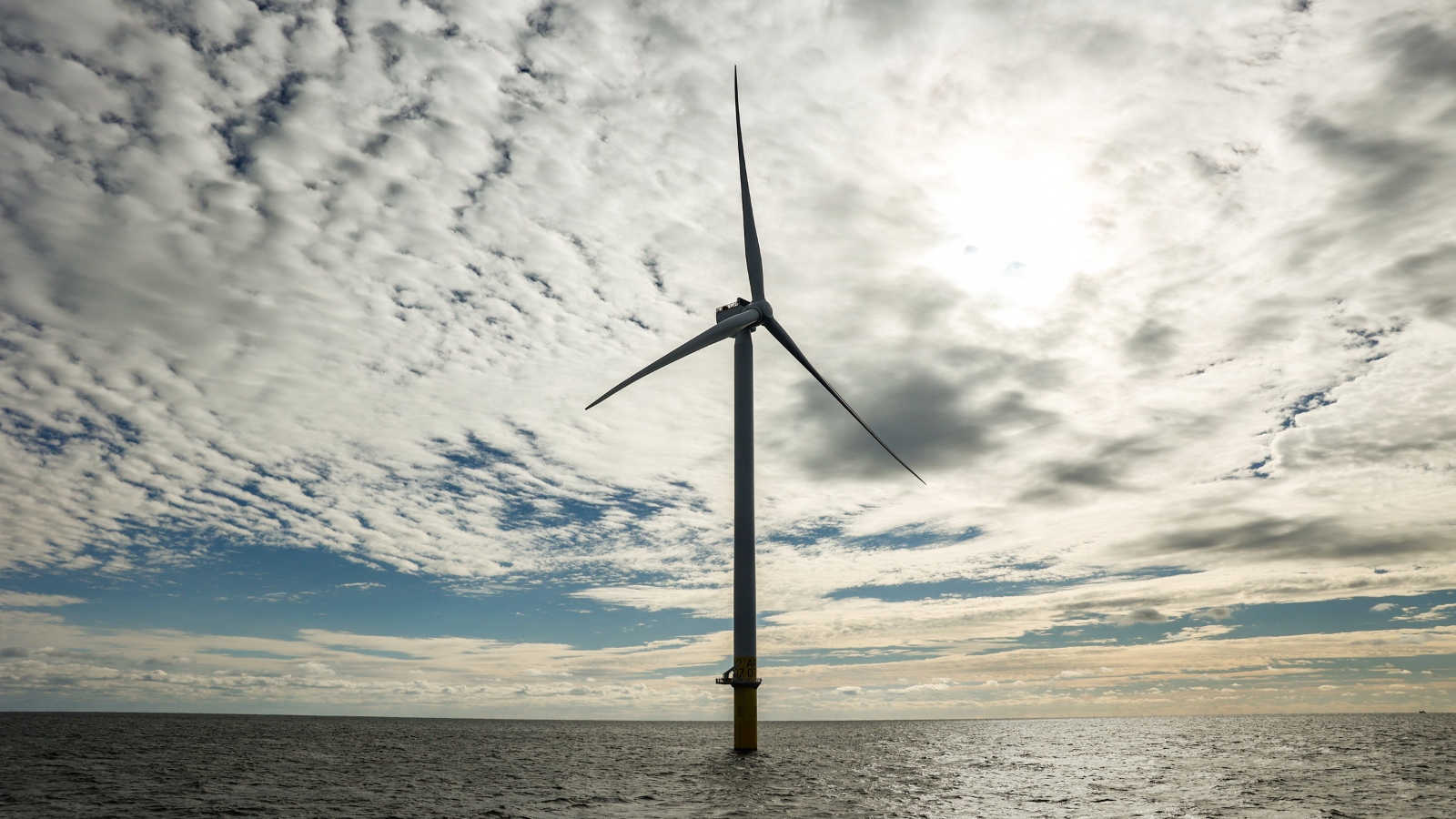Now Reading: The race to build solar and wind in New York before Trump’s tax credit deadline
-
01
The race to build solar and wind in New York before Trump’s tax credit deadline
The race to build solar and wind in New York before Trump’s tax credit deadline

This story was originally published by New York Focus.
As negotiations over President Donald Trump’s “Big Beautiful Bill” came down to the wire in early July, renewable energy developers were holding their breath. Until the eleventh hour, it looked like Congress was ready to make good on Trump’s promise of “terminating” key subsidies for wind and solar virtually overnight.
In the end, the industry breathed a small sigh of relief after the Senate reached a compromise that would, at least in principle, give new projects a slim window to go ahead. Under the final law, wind and solar projects that begin construction by July 4 of next year are eligible for the full federal tax credits. Halfway through that window, a new requirement kicks in: Projects that begin construction after January 1, 2026, can only keep the tax credits if they follow restrictions on the use of Chinese materials.
That could still upend New York’s renewable energy transition.
Federal tax credits have typically covered almost a third of the cost of building a solar or wind farm. That’s made them “critical to financing and ultimately building renewable energy projects,” said Carl Weatherley-White, interim chief financial officer at the development firm Greenbacker, which is currently building New York’s largest solar farm and has several smaller projects in the works. “It’s been a core part of the business for 20 years.”
The bill will also impact New York’s public power authority, NYPA, which this year issued a plan to put up more than three gigawatts’ worth of solar and batteries, and has been counting on federal tax credits to deliver.
Developers now have less than a year to start digging if they want the subsidies. The impending deadline is lighting a fire under the industry — and, developers hope, under New York’s leaders, too.
“Now, the game is in the states,” said Marguerite Wells, executive director of the renewable energy lobbying group Alliance for Clean Energy New York. “I would say there’s many thousands of megawatts’ worth of wind and solar in upstate that would be eligible to fall into that start of construction if we played the cards right.”
For a start, there are 26 permitted but unbuilt wind and solar projects in the state, which in total could unlock about 3,000 megawatts’ worth of energy — enough to power some half a million homes. Only two of the large projects the state has approved in the last four years have even started construction; one of them was completed in late 2024, more than six years after filing its first paperwork. (The most recent permit was issued last week, but most of the permits date back to 2023 or earlier.)
The problem? The state doesn’t make it easy to move quickly. It normally takes years for wind and solar projects just to get permits to begin construction in New York, despite reforms intended to speed up the process. The rest of the approval process can take years, too. More environmental reviews are required even after the main permit is approved. And it’s just as complicated getting approval to connect to the grid.
All told, at least three different sets of regulators have to weigh in before a company can put shovels in the ground. That makes New York far more restrictive than other states in allowing developers to start building.
There are things the state could do to speed things up, like allowing developers to start construction even while they finalize certain details of their projects, but it’s largely in Governor Kathy Hochul’s hands.
Jolting the process forward would require a concerted push across her agencies. Besides permits, building a wind or solar farm in New York requires a contract with the state’s energy research and development arm, NYSERDA, guaranteeing that the developer will get paid for the energy the facility produces. Sometimes it requires the state Department of Environmental Conservation to weigh in on water quality plans, with additional input from the US Army Corps of Engineers. And it requires the state’s grid operator — which acts independently — to assess the impact and cost of connecting the facility to the grid.
Developers need answers from all of those entities before they can break ground, Wells said: “Every last whisper of detail of the project has to be finalized before they generally let you start construction.”
In her eyes, improving coordination between all of New York’s energy regulators is the single biggest thing the state could do to help move construction forward.
It’s not yet clear how committed Hochul is to the effort.
“The Governor has directed the state’s energy agencies to conduct a high-level review of the federal legislation and specific impacts to New Yorkers,” spokesperson Ken Lovett told New York Focus, when asked whether the Hochul administration shared developers’ goal of accelerating construction.

Courtesy of Greenbacker Renewable Energy Company
Before most developers even had a chance to fully digest the changes coming down from Congress, Trump threw in another gut punch. Last week, he issued an executive order directing the Treasury Department, which enforces tax credit rules, to revisit how it defines a project’s “start of construction.”
That throws even the megabill’s one-year deadline into doubt. Historically, developers have been allowed to qualify for tax credits by proving either that they’ve started physical construction or spent a certain amount of money. Now, Trump has given federal regulators 45 days to revise those definitions.
The specific definitions that the Treasury adopts could prove decisive in some cases. But whatever exact language the administration lands on, the bottom line is that Trump still has significant leeway to kill wind and solar projects if he’s committed to it, said Advait Arun, senior associate for energy finance at the think tank Center for Public Enterprise.
“Simply, I think Trump is trying to use control over the IRS to exercise his judgment about what projects should proceed and what shouldn’t,” he said.
Trump will have even more sway after the end of this calendar year, when additional requirements kick in. Starting in January 2026, developers hoping to claim tax credits will have to abide by restrictions on sourcing from “Foreign Entities of Concern,” including those connected to the Chinese government. The megabill tasks the Treasury with updating those rules, giving Trump another opportunity to crack down on what he’s called the “Green New Scam.”
It all adds up to shaky terrain for renewable developers, even those who stand a chance of getting shovels in the ground within a year.
“The big concern … is that no matter what we do, someone in the Treasury is going to just say no,” said Weatherley-White, of Greenbacker, speaking to New York Focus a few hours before Trump issued his executive order last week. (Reporting earlier this month had already suggested that the construction rules could be in the crosshairs.)
Neither Weatherley-White nor Wells, of ACE NY, responded to follow-up inquiries about the order.
Unless the Trump administration completely upends what counts as the “start of construction,” there’s still a lot New York could do to help more projects get in under the one-year bar.
For example, in many states, wind and solar developers can begin construction on projects that don’t have all of their final approvals, but have the main elements of their design — like the location of roads and buildings — agreed upon, Wells said. But in New York, that initial green light is hard to get. It would make a big difference if the state were to adopt the practice more readily, she said.
New York could also jumpstart the contracting process for wind and solar projects. Close to half of the state’s permitted but unbuilt projects had contracts that were canceled after post-pandemic inflation upended their finances. Over the last year, the state has announced new contracts for dozens of projects in this situation, but others remain in limbo.
NYSERDA had plans to kick off a fresh round of wind and solar contracting by the end of June, but it’s behind schedule. A spokesperson said the agency would begin the process by the end of September.
Those nitty-gritty steps are unlikely to change, though, unless Hochul makes it a priority. The governor could direct agencies to fast track permitting or contracts, as she did with offshore wind a couple of years ago. She has lately shown a keen interest in cutting red tape for other forms of energy — specifically, a nuclear plant that she has tasked NYPA to build by 2040. (There, though, the key approvals need to come from the Trump administration rather than her own.)
Her Department of Environmental Conservation also appears to be speeding along a revived pipeline project that would bring gas into New York City and Long Island. The agency said earlier this month that it had received a complete application from the pipeline company and opened a 30-day comment period with no public hearing. The notice came just five weeks after it was revealed that the state would reconsider the previously abandoned project — reportedly as part of a deal with the Trump administration to allow a major offshore wind project to move ahead, though Hochul’s office has denied a quid pro quo.
Renewable developers, by contrast, can spend years applying and reapplying for permits before they’re allowed to proceed to a mandatory, 60-day public comment period.
“If we’re cutting red tape for other forms of energy, we should cut red tape for renewable energy, too,” Wells said.
Whether any wind or solar projects remain viable in New York after the federal tax credits expire remains an open question. Although Trump has framed his efforts as rolling back Biden-era policies, solar and wind tax credits date as far back as the 1970s, and have remained largely steady since 2005.
Some, like Weatherley-White, remain optimistic that the renewable industry can learn to live without them.
“The renewable energy industry has adapted to lots of changes over time,” he said, suggesting that developers could find ways to cut costs to cushion the blow from losing the tax credits.
“Unfortunately, there will be losers and winners,” Weatherley-White continued. “I think we’re going to see some short-term pain. But in the long run or medium term, let’s say, I think people will adapt and succeed.”
The labor coalition Climate Jobs NY struck a similarly bullish tone in a statement earlier this month. “With or without the support from our federal lawmakers, union workers in New York will find ways to build the pro-worker clean energy economy we need,” the group wrote.
Others see the glass half empty. Arun said that a key part of how the industry hoped to bring down costs was by using tax credits to build momentum and standardize the development process.
“If you can’t build, there’s no standardization or lowering costs through economies of scale,” he said. “And that’s what I’m really worried about.”
Hochul’s office, too, is striking a sober note.
“The federal budget bill slashes the very tools states need to achieve energy independence and economic growth,” Lovett said, “and no state will be able to backfill the massive cuts they face across so many key areas.”





























